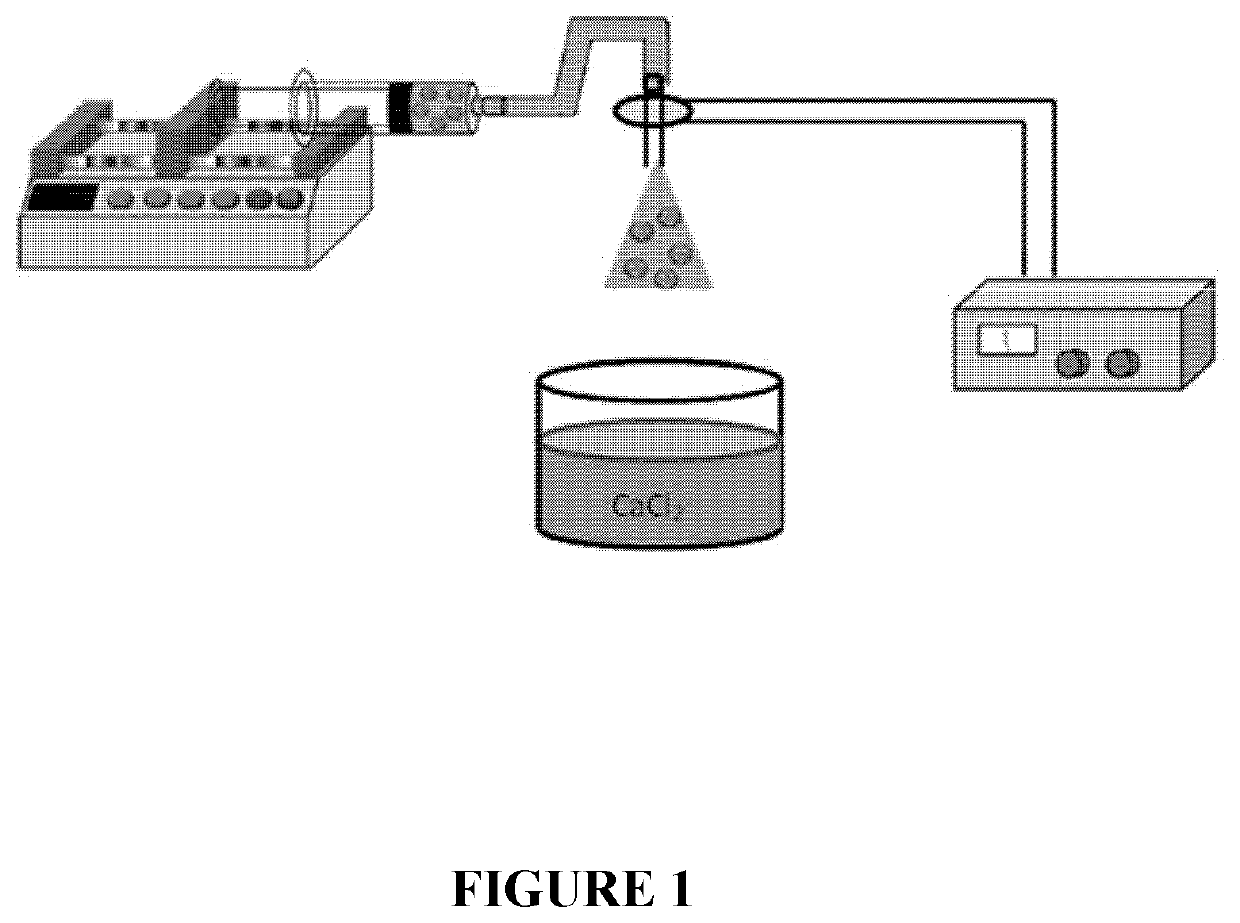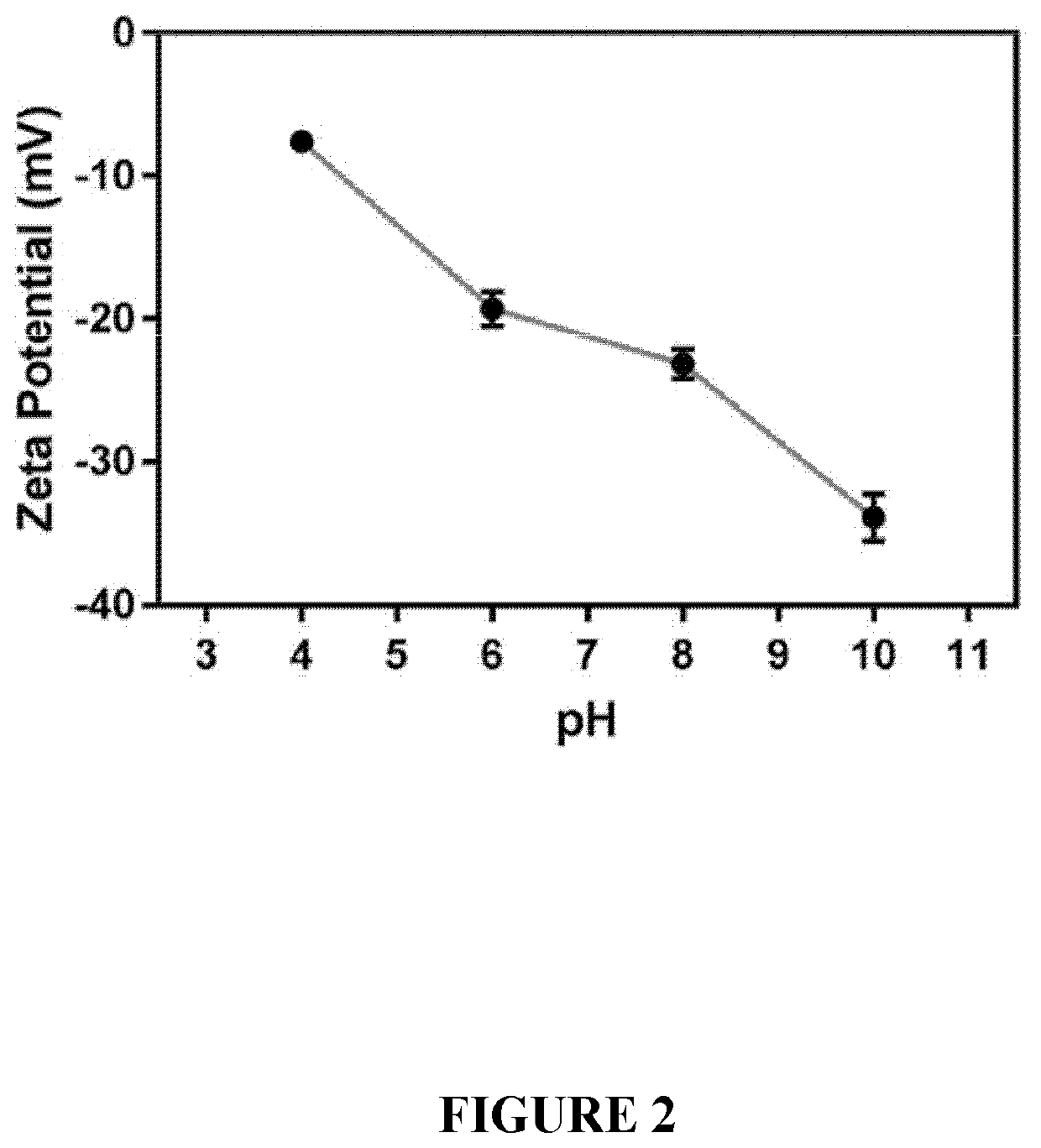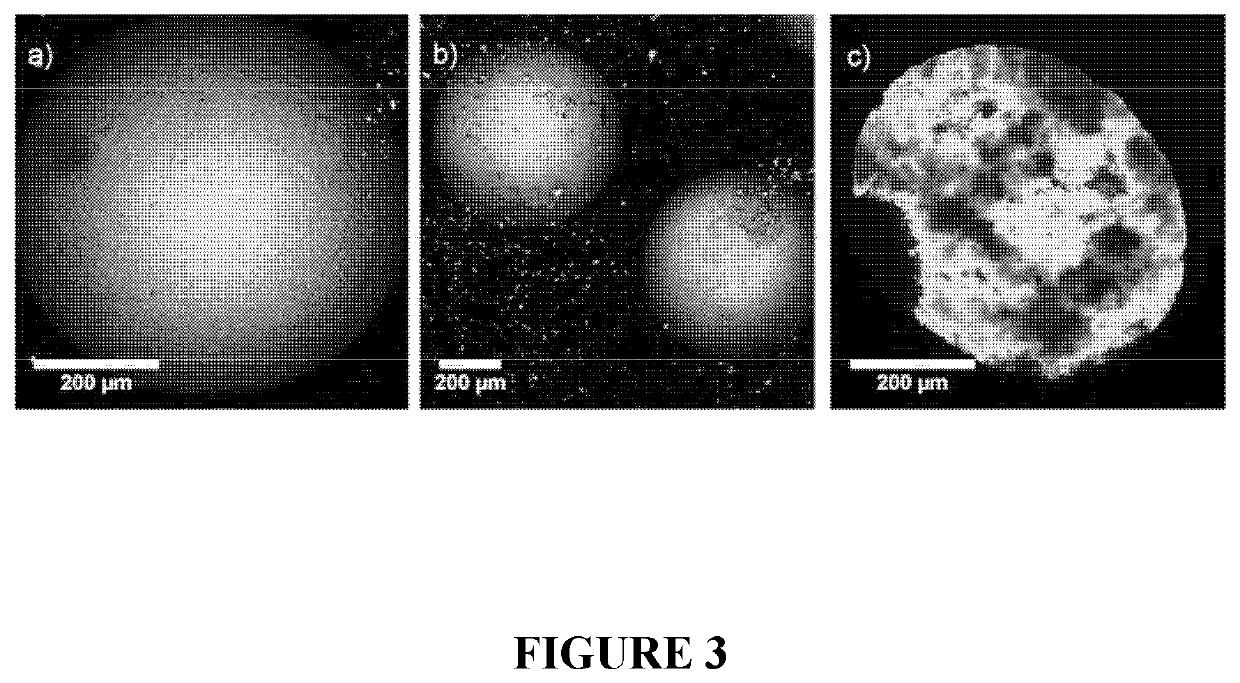Supraparticle Formulations
a technology of suraparticles and formulations, applied in the field of suraparticles, can solve the problems of toxicity issues in subjects, reduced long-term efficacy of drugs, and high dosing frequency, and achieve rapid increase in bioavailability of payloads, reduced long-term efficacy of drugs, and the effect of increasing the frequency of dosing
- Summary
- Abstract
- Description
- Claims
- Application Information
AI Technical Summary
Benefits of technology
Problems solved by technology
Method used
Image
Examples
example 1
cle Production
[0191]Mesoporous silica nanoparticles (MS-NP) ware produced using methods based on those described in Cui et al. 2015, ACS Nano, 9, 1571-1580. 1.1 g Cetyltrimethylammonium bromide (CTAB) was completely dissolved in 50 ml Milli-Q with stirring. 4.3 g of Poly(acrylic acid) solution (PAA, Mw=250 kDa, 35 wt % solution in water) was subsequently added with vigorous stirring for 20 mins at room temperature (25° C.) until a clear solution was obtained. 3.5 ml ammonium hydroxide solution (28-30%) was then added to the solution with vigorous stirring, resulting in a milky suspension. 4.46 ml of Tetraethyl orthosilicate (TEOS) was then added after stirring for 20 min. The solution was stirred for a further 15 min before transferring the mixture into a Teflon-sealed autoclave, which was left at 90° C. for 48 h.
[0192]The as-synthesized MS-NP were washed with ethanol once, water twice and ethanol twice and finally dried at 90° C. The organic templates were removed by calcination at...
example 2
Supraparticle Manufacturing Process—Process A
[0193]Mesoporous silica (MS) nanoparticles, were prepared according to Wang et al. (2010) Chem Mater. 22, 3829-3831. MS nanoparticles were dispersed in Milli-Q water with a particle concentration of 5 wt % and briefly sonicated to form a stable colloidal suspension. A 0.5 to 2.0 μL aliquot of the MS nanoparticle dispersion was then applied to a flat surface, which was pre-covered with a paraffin film. The droplets were dried under air flow to drive assembly of the MS nanoparticles into mesoporous silica supraparticles (capillary force MS—SPs) via capillary force action. The size of the capillary force MS—SPs was controlled by the volume of the nanoparticle dispersion applied in the droplet.
[0194]Under capillary force, the MS colloids self-assembled into a compact structure to form MS—SPs. The capillary force MS—SPs were then removed from the paraffin film and transferred into a ceramic container, and annealed at 923 K to enhance mechanica...
example 3 — modified manufacturing process — process b
Example 3—Modified Manufacturing Process—Process B
[0195]80 mg of MS-NPs powder was added into 2 ml of alginic acid sodium salt solution (30 mg mL−1 in water). The resulting solution was sonicated for 1 hour until the MS-NPs distributed uniformly in alginic acid sodium salt solution.
[0196]To form large pore MS—SPs (LMS—SPs), the sonicated solution was added into a 3 mL plastic syringe and positioned in a syringe pump, with liquid being electrosprayed into a bath of calcium chloride solution (1 wt % prepared in water) using flow rates around 8 mL h−1 (electrospray setup shown in FIG. 1). Droplet size was controlled by applying an electric field between the end of the tubing and the calcium chloride solution. The alginate beads MS—SPs (LMS—SPsalg) were collected from the calcium chloride bath and loaded with payload. Significantly enhanced drug-loading loading performance was observed for these particles (LMS—SPs) compared to those produced by process A: about 7.8 μg protein per partic...
PUM
 Login to View More
Login to View More Abstract
Description
Claims
Application Information
 Login to View More
Login to View More - R&D
- Intellectual Property
- Life Sciences
- Materials
- Tech Scout
- Unparalleled Data Quality
- Higher Quality Content
- 60% Fewer Hallucinations
Browse by: Latest US Patents, China's latest patents, Technical Efficacy Thesaurus, Application Domain, Technology Topic, Popular Technical Reports.
© 2025 PatSnap. All rights reserved.Legal|Privacy policy|Modern Slavery Act Transparency Statement|Sitemap|About US| Contact US: help@patsnap.com



